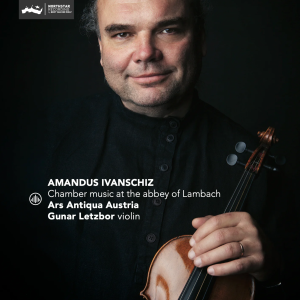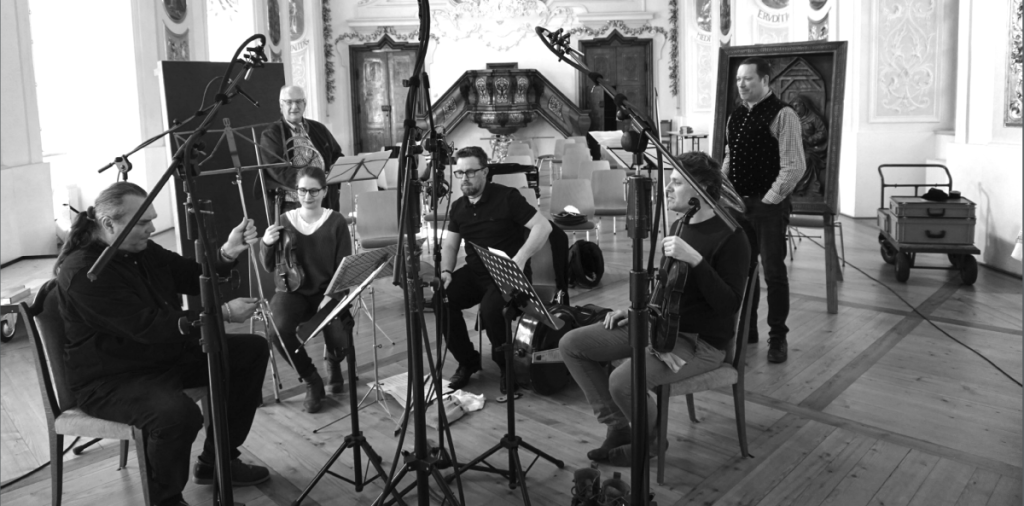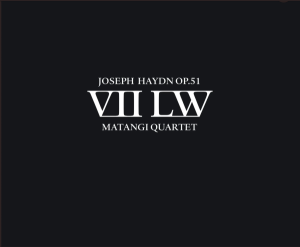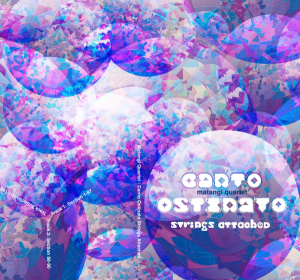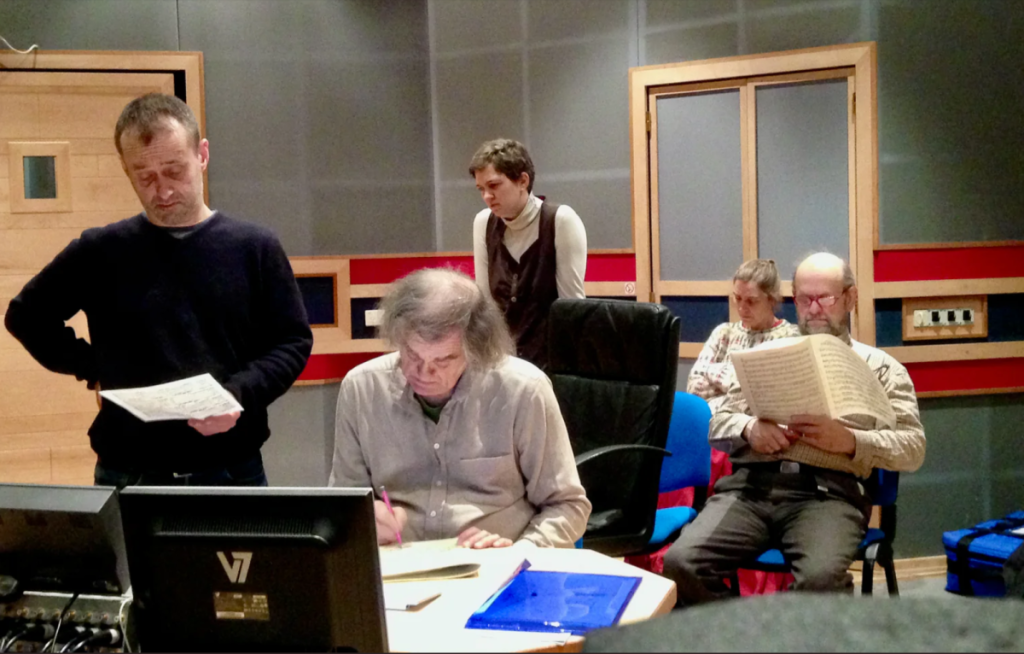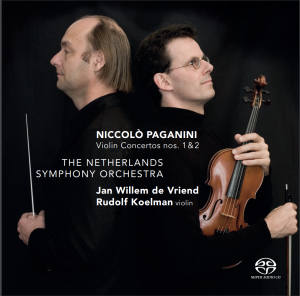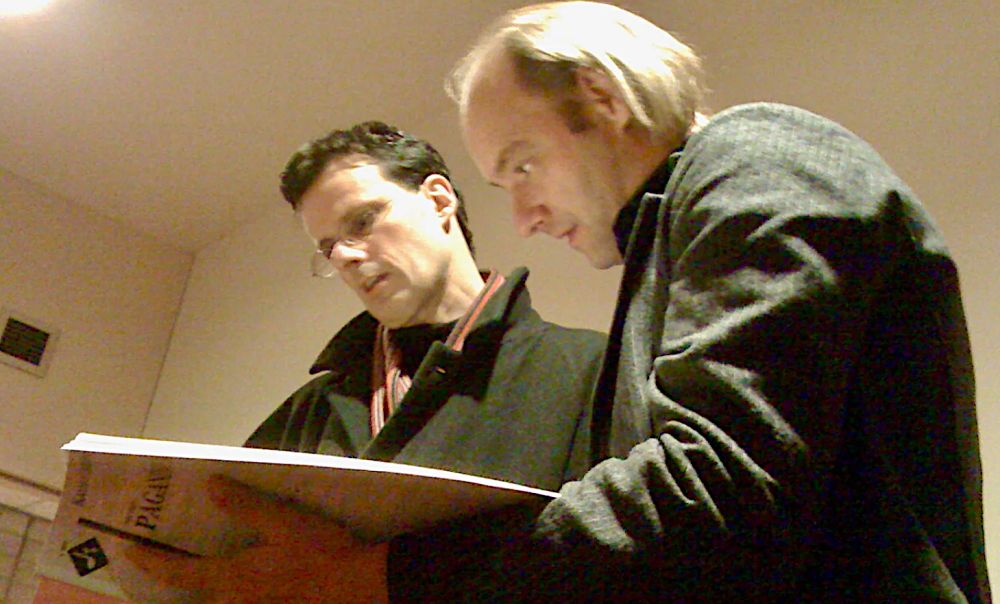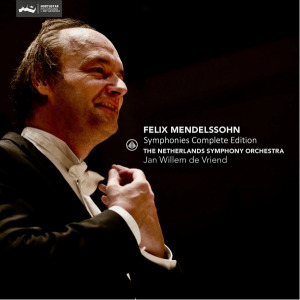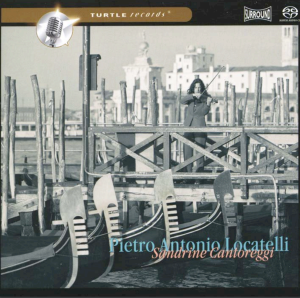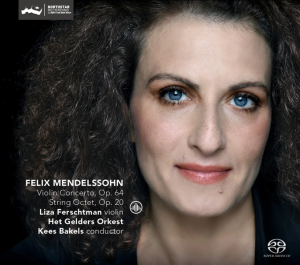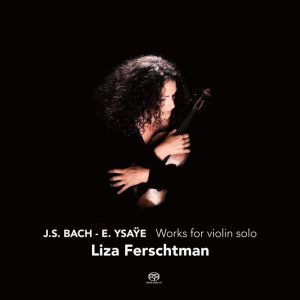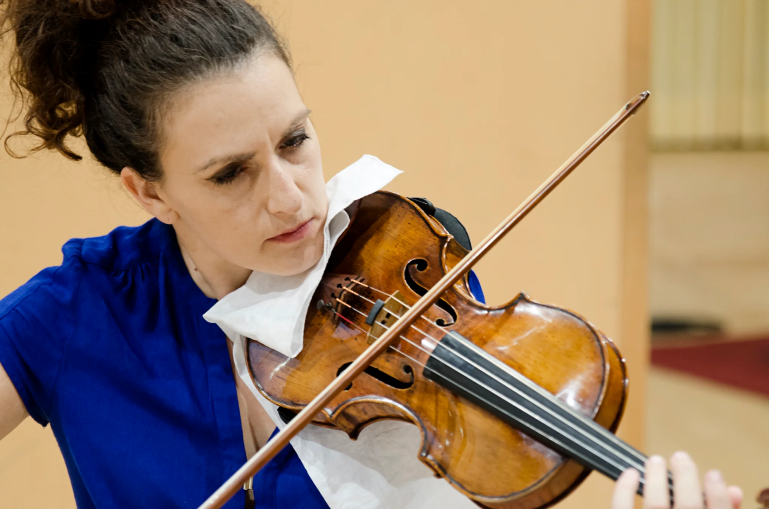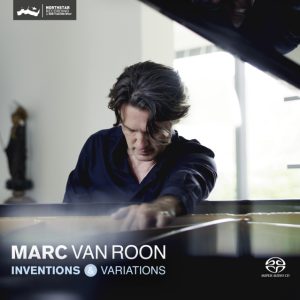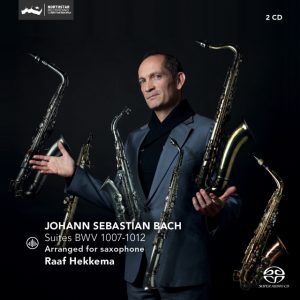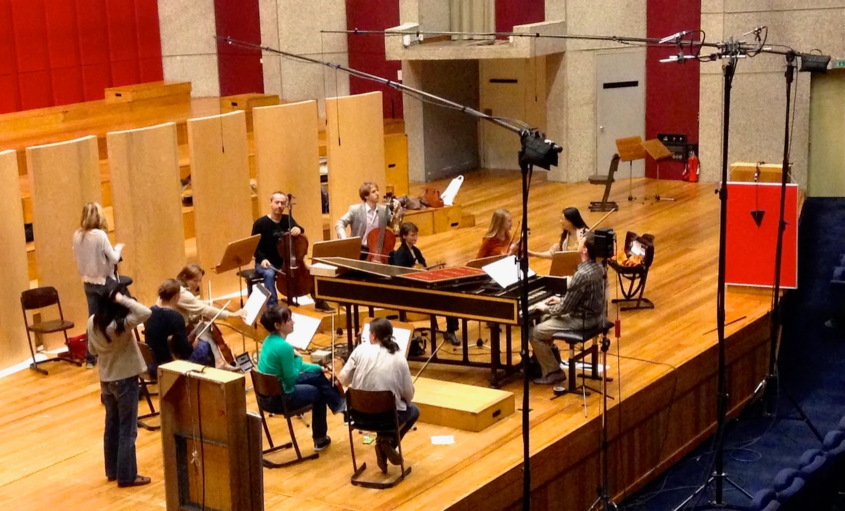"Life is a magical mystery; Bert has no part in any of that…" - Bert van der Wolf
Producer, recording and mastering engineer Bert van der Wolf, owner of Northstar Recording Services, has been making among the best engineered classical recordings one will find. I've written before about his recordings (see list of articles here) and I'm always excited by the prospect of listening to his work. In this article, I have several recent new releases to share, plus some earlier gems that are not to be missed, and some further thoughts on why I so greatly enjoy Bert's recordings. And, for me, Bert truly does make magic!
What I always hear with Bert van der Wolf's recordings are: 1) excellent artists, performing interesting repertoire; 2) lovely, airy, natural acoustic venues that support and enhance the sound of the instruments; 3) superb balance of the direct and reflected sound of the instruments to create the verisimilitude of being present in the room; and 4) the lovely and very natural sound of the instruments that fully captures their timbre, dynamics, and frequency extension (including voice).
For those interested in surround sound recordings, all of Bert's recent recordings are available in both 5.1 and 9.1 channel DXD downloads from his retail site, The Spirit of Turtle, in addition to stereo. And, since he regularly records for the Challenge Classics label, you will find many of his recordings in DSD64 at the Challenge Classics section of NativeDSD HERE. Since I'm not set up for surround sound, I can share with you only what I hear in the stereo recordings. But knowing Bert, I have a very strong belief that his surround recordings are stunning.
Ivanschiz: Chamber Music in the Abbey of Lambach. Ars Antiqua Austria, Gunar Letzbor, violin. Challenge Classics. Northstar Recording 2022 (DXD) HERE
Pleasant baroque chamber music, excellently performed by Ars Antiqua and Gunar Letzbor (as always), and another very nice recording by Bert van der Wolf. Sometimes this is all one needs to say. But this recording demands more.
Baroque chamber music can be very pleasant, very engaging. It will be eminently enjoyable when performed as elegantly as Ars Antiqua Austria performs in this album with their leader and first violinist Gunar Letzbor. And when this music is nicely varied and innovative, as is this, all the better.
Variety is sometimes hard to come by in an album filled with music by just a single composer. But here one will have no worries. The music by Amandus Ivanschiz is all nicely varied, quietly innovative, and eminently enjoyable. A very nice portion of my day has been filled quite delightfully (and so it is yet again as I come to revisit my first draft of this review). At just under an hour, this is a recording with which to simply relax, be quietly, enjoyably, entertained and to emerge thoroughly refreshed. Thus my listening to this new recording from Ars Antiqua Austria has been.
Amandus Ivanschiz (1727 - 1758) is a composer completely unknown to me before this recording But listening through six of his compositions on this album encourages me to watch for more of his music. Gunar Letzbor and his Ars Antiqua Austria ensemble make a point of seeking out lesser known Austrian composers for their recordings. And this is one of the charms of each of their releases: I know I'm going to hear music I've never heard before and be introduced to composers who I've not known but, as here, will be pleased to have met.
At the age of 15, Ivanschiz made the decision to enter the Pauline Order and the monastery. In 1750, at the age of 23, he was ordained a priest and entrusted with the consecration of the cathedral's new organ. In 1751, the Order sent him to Rome as a secretary. He was to remain there until 1754 and would certainly have enjoyed ample opportunity to acquaint himself with the latest musical trends in the papal city. In 1758 the payment of a fee for five settings of the Litany and a religious cantata is documented. His death is recorded later that year in Maria Trost. Unfortunately, many documents from his time in that town have been lost, and in 1786 his Order was dissolved.
Members of Ars Antiqua Austria in recording session for Ivanschiz: Chamber Music in the Abbey of Lambach on 10-12 March 2022.
Haydn: VII LW (Seven Last Words of Christ on the Cross), Op. 51. Matangi Quartet. Northstar Recording 2019 DXD HERE
Few string quartets have the range and depth of communicative ability to successfully pull off this work. Some music writers have said they've not heard a bad performance. With that I have to disagree. But, there are wonderful performances and there are serviceable performances and there are so so performances.
For me, the Matangi Quartet performance resides among the wonderful performances of this monumental work. Aside from their inordinately strong technical skills lies their interpretative and communicative excellence. Theirs is an intensely dark, sparse, broad, atmospheric and vibrato-lite performance. Not an easy listen but impressive. And this interpretive challenge is one of the reasons performances by different ensembles can be so variable. Haydn left a lot of the manner of performing this string quartet arrangement up to the performers. I happen to particularly like the way Matangi Quartet has chosen to flesh out the performance criteria for this work.
Matangi write in the enclosed notes, "What could be a bigger challenge than giving musical expression and shape to Die sieben letzten Worte, the seven last sentences that Jesus spoke on the cross: giving feeling and articulation to the most charged text in the world, but without the words? Haydn did this more than successfully in 1787 with these seven string quartets."
This work is emotionally charged. Whatever your beliefs, the expressive power of this work is undeniable. With nuance, subtlety, and tremendous poise, the Matangi are able to traverse the landscape of this massive work with direct expression and without falling into a labyrinth of emotional pathos (or excess).
The slow tempi of the dramatic opening and each of the seven parts that follow, and indeed the sheer length of the piece induces an almost trance-like state: an hour of adagios with many contrasts of atmosphere and feeling. And then suddenly the bombastic and shocking earthquake (Terremoto) of the final two minutes. One is hit by it totally unawares; the violence of the music makes such a contrast to what has come before. And the Matangi Quartet members pull off this ending supremely well, with a fine balance of terror and musicality.
Haydn originally wrote this music as an orchestral piece. He later arranged for it for string quartet (as heard here), and then later wrote an oratorio and even gave permission for a piano arrangement. Of all his different treatments of this work, I most enjoy the string quartet version—for the sonority of the strings and the extreme intimacy they create by themselves.
Haydn created a very challenging work for the audience, it will not be to everyone's liking given how dark and unrelenting it is. I'll readily admit this. But, if you are willing to undertake the challenge, I think you will find the performance by the Matangi Quartet eminently rewarding.
To add to the experience, this performance is beautifully recorded by producer and recording engineer Bert van der Wolf. The sound quality, and the ultra high resolution as heard in this DXD download, make it rise to the top of the pile for me. Just superb.
Another recording by the Matangi Quartet that I've recommended highly is their album Outcast (above), with music by Schnittke, Silvestrov and Shostakovich. It includes an exceptionally fine reading of Shostakovich's String Quartet No. 8. See my earlier enthusiastic review of this album HERE
Matangi Quartet in recording session for Haydn: VII LW on 18-19 July 2018
Simeon ten Holt: Canto Ostinato Strings Attached. Matangi Quartet. Northstar Recording 2019 DXD HERE
Simeon ten Holt's Canto Ostinato (1976 - 1979) has developed quite an appreciative following, even fanatical. And I can understand why after listening to it for the first time in this arrangement for string quartet. It is innovative, engaging, immersive and mesmerizing. Revolving around tonality and repetition, it weaves a constantly emerging, constantly changing, web of sounds as it explores bowed, plucked, struck, strummed and thumped instruments.
Matangi write: "One of the greatest pieces composed for string quartet is Beethoven's Op.131. The huge tension and the fact that you know you're about to embark on an adventure even before the first notes have sounded make this a piece which lets you forget the world around you and transports you to a new one, all at the same time. As far as we are concerned, this adaptation of Canto Ostinato makes it a worthy sibling of that Op. 131."
Simeon ten Holt (1923 - 2012) was a Dutch composer who, following his studies in Bergen and Paris, immersed himself in serialism in the 1960s. Characteristic of his work method was an atonal and theoretic approach to the music. He abandoned serialism in the 1970s and in what he called an inner process of transformation, found room again for tonality in this period. He went on to compose intuitively and from the instrument as opposed to directly on paper. And this produced Canto Ostinato (1976-1979), which revolves around tonality and repetition. Ten Holt decided to stop composing in 1999, saying: “I had said my last word, and if you have nothing more to say, you should stop.”
I find this immersive journey well worth while. I can't play it twice in a row, it is too emotionally and intellectually draining (assuming you are paying attention). But I do come back to it and enjoy it again each time I retake the journey.
As always, Matangi are fully committed in their music making, with an ensemble and excellence of technique that staggers my mind. And yet, their performance sounds totally relaxed, completely engaged, completely focused. This is most impressive music making and a monumental musical composition.
And the recording quality is again of such a high level of excellence I simply repeat myself to comment on it. Just, well done! Highly recommended.
Schubert String Quintet D. 956. Kuijken Quartet, with Michael Boulanger, cello. Challenge Classics. Northstar Recording 2014 DXD HERE
This recording is one of those past gems not to be ignored. This recording is by two generations of musicians from the Kuijken family (Veronica, Sigiswald, Sara and Wieland Kuijken), with fellow-musician Michel Boulanger as the first cello. The Kuijken family is musical royalty in my book. And the addition of Boulanger on cello to fill out the quintet is just a huge "value add."
Widely regarded as Franz Schubert's greatest chamber work, the String Quintet in C major, D. 956, is also a masterpiece of the repertoire and a serious challenge to perform. The competition among various performances is intense, and there are a wide variety of interpretive viewpoints from which to choose. Generally, I find no single performance is the only right one to hear. They each bring different virtues and I learn something different from each.
The Kuijken family and Boulanger are most commonly heard in period performances on original instruments. Yet here they play on modern instruments, giving the sound of this performance a rich and resonant sound. The recording aptly captures and enhances this sound while providing excellent balance, detail and extension. The performers maintain total control over the shifts and turns with which Schubert challenges us in this work. And they do so while maintaining a consistently joyful, but somewhat subdued, presentation, with broad flowing expression.
Their reading of the piece avoids excess; there are no exaggerations to create unnecessary distraction. This is not a white hot, urgent, heart-on-sleeve performance that one may hear elsewhere. This is a more reflective reading—quieter, deeper. Here the musicians do not call out "see us, hear us"—instead they perform in service to the music, with humility that places Schubert first, not themselves. And thus we get a poised and balanced performance that is a pleasure to hear, more measured than buoyant and perhaps not the last word in expressive nuance (but that would distract from their commitment to this very direct reading). Some other performances (to remain unnamed) simply exhaust me with their constant efforts to impress through expressive playing—simply not a good stylistic choice for my tastes in this composition. The playing is impeccable throughout.
Sigiswald Kuijken shares in the liner notes a very cogent thought about this music of Schubert:
No language has the words to describe the essence of Schubert's deepest musical outpourings. Probably the greatest tribute is paid to music of this quality not by talking about it, but by listening to it. Listening, not once, but many times; not with half an ear, but not too analytically either: listening in astonishment and with an open mind.
Coupled with the excellent recording quality from Bert van der Wolf, we are provided with a performance worthy of being listened to again and again. (I, for one, am now on my fourth playing of this album as I sit down to write this review.) If I have a "niggle" with the sound quality of this 2013 recording, it might be that it is closer than some of Bert's later recordings that I find capture a bit more of the natural acoustic reverberation of the room and, thus, a greater balance of the direct and indirect sound. But, if you like very direct sound from the instruments, you'll very much enjoy this. Recommended.
Haydn Quintet D.956 - in the control room reviewing a session take.
Duos for Violin and Violoncello, music of Kodaly, Ravel and Schulhoff . Liza & Dmitry Ferschtman. Challenge Classics. Northstar Recording 2012 DXD HERE
When this father-daughter duo perform together a certain magic fills the air. There is a relaxed freedom to their performances that I find most addictive. Liza & Dmitry Ferschtman play this music as if entirely for themselves, for their own enjoyment, and we are simply invited to listen in. That their performances are also world class is simply a side benefit.
Here are three monumental works from the canon of duos for violin and cello. If you don't have these works already in your music library, I can't think of a better set of of all three works than in this album. Is any one of these performances necessarily my favorite interpretation of that work? No, possibly not. But again possibly so. My preference will depend on my mood. My point being: these are outstanding performances; they will stand measure with any in the catalog.
And, they are captured in simply luscious sonics in this Bert van der Wolf recording. Bert has captured the air of the natural acoustic environment in which they play, while simultaneously balancing the extraordinarily detailed direct sound of their instruments. The detail and timbre of these instruments is captured beautifully. In listening to these performances, I feel that I could be in the room with them, and just a row back. Very nicely done!
Oh, and as to a favorite performance, I'd highly recommend a good listen to Czech composer Erwin Schulhoff's Duo for Violin and Cello (1925). This is a brilliant work and the performance here is superb.
Schulhoff's life was tragically cut short in a German concentration camp in 1942. As a Czech Jew who collaborated with Nazi Germany's enemy, he was arrested and imprisoned in Wälzburg concentration camp, where he died of tuberculosis at forty-eight years old. Such a loss.
Paganini Violin Concertos. Rudolf Koelman, Jan Willem de Vriend and The Netherlands Symphony Orchestra. Challenge Classics. Northstar Recording 2012 DXD HERE
Love him or hate him, Paganini always makes an impression. Koelman plays boldly, strongly, somewhat dashingly, and he maintains strong forward propulsion giving the music good continuity. Some other performances lose this continuity and forward motion as they emphasize the variety of tones and expression that Paganini's music quite properly contains. Koelman is not elegant as is Hilary Hahn, but his performances have a strength and movement to them that I very much admire.
De Vreind's orchestral leadership provides and excellent partnership to Koelman. De Vriend comes with a background in music of the baroque and one might think this places him at some disadvantage in these works. To the contrary in my opinion. I find De Vriend's lighter, more incisive, tendencies to be exactly what makes this performance more enjoyable for me than many others. Gone is the strong vibrato baggage, gone is the mooning romanticism. Instead one has a rather delightful spring and propulsion to the music. In any event, Koelman and De Vriend seem well matched in their outlook on the performance choices for this music; there is synergy not tension.
Bert van der Wolf's recording is rich, expansive and airy, nicely capturing the natural reverberation of the hall while providing excellent balance and detail of soloist and orchestra. Another extremely well recorded outing, as we've come to expect.
Koelman and De Vriend at November 2008 recording session.
Mendelssohn Symphonies Complete Edition. De Vriend, Netherlands Symphony Orchestra. Challenge Classics. Northstar Recording 2012, 2014, 2020 DXD HERE
Jan Willem de Vriend and The Netherlands Symphony Orchestra deliver very stylish, dynamic and engaging performances of the Mendelssohn symphonies throughout this entire cycle, which includes his overture Ruy Blas, op. 95 (recorded in 2020), as well. This three-volume + one track cycle is available in the individual volumes or all together as a bundle. Since there is a consistency in these very excellent performances, I am writing about them collectively.
I've written before about my enjoyment of De Vriend's performances with The Netherlands Symphony Orchestra (the Schubert symphonies HERE , the Beethoven piano concertos HERE, and arias by Handel and Mozart HERE). He comes from a background of period instrument practice, and since taking leadership of the NSO (2006-2018), he introduced some of that period practice into this modern instrument orchestra, replacing the brass with period instruments, sticks for the tympani, and significantly reducing the use of vibrato aiming at a new and different sound. And this orchestra under De Vriend does deliver a decidedly different sound. It is not that of a period instrument orchestra nor that of a modern orchestra. It abides someplace between, making use of the timbre, range and flexibility of modern instruments while adding the light, fleetness found with the typically smaller period instrument ensembles.
This light, fleetness is very apparent in the Schubert Symphonies cycle referenced above. It similar shows itself here with sparkling performances of the Mendelssohn Symphonies. De Vriend extracts detail, subtle tonal variations and tempo variations that are all enhanced by this synthesis of the period and modern. And he leaves nothing behind when delivering powerful crescendos.
These performances have a lithe, sinewy muscularity that is most agreeable and refreshing.
So, if you wanted to sample these performances, but not spring for the 3-volume set all at one go, where might you start? First, I'd suggest you stream some of the full-track samples at 24/48kHz from NativeDSD on the Challenge Classics label. Then, if you like what you hear, but you hunger for the full DXD resolution as I do, follow the link above to the Spirit of Turtle site and order Volume 3: Symphonies 4 & 5, HERE. Here you will get the Italian Symphony and the Reformation Symphony, two of the mainstays. From there, I'd suggest Volume 2: Symphonies 1 & 3 "Scottish," HERE.
As I have come to expect from Bert van der Wolf, the recorded sound quality is excellent. Well balanced, nicely capturing the air of the natural acoustic environment, eminently detailed, fully dynamic. They are just superbly well recorded. And, the DXD original recorded format is decidedly more of all of this sonic excellence than the lower resolution formats you may hear from elsewhere than Spirit of Turtle.
Highly recommended—any and all.
Jan Willem de Vriend, circa 2014.
Liszt Les Années De Pèlerinage, Years 1, 2 and 3. Yoram Ish-Hurwitz. Turtle Records 2003, 2004 DSD64 HERE
These recordings reach back a few years, but they are very nice performances and the recording quality is excellent. I first tried Yoram Ish-Hurwitz's recordings of Albeniz' Iberia, and they were so nice that I wanted to hear what he might do with these. These are even better. Do they displace Aldo Ciccolini's pioneering performances in my pantheon? No. But they are in better sound quality and they are very competitive.
I find I'm enjoying his performances of Années even more than his traversal of Iberia., perhaps I am too much imprinted by De Larrocha's performances to hear his. Still, it is Années we're discussing, so I must stay on topic. Ish-Hurwitz is fresh and spontaneous. With a sensitive touch during softer passages, Ish-Hurwitz is able to deliver a superb sense of drama. He spins a story with his performances that leaves me wanting more as the time just passes me by so quickly.
The recording is just that perfect balance of direct and reflected sound that Bert so often achieves in his recordings. Given that this was recorded 20 years ago, it stands as a strong testament to Bert's innate sensitivities about getting a recording that sounds like a real instrument in a real natural acoustic space. This is something I've long treasured with his recordings.
You may have noted that the record label listed is "Turtle Records." This is a label Bert started on his own early in his professional career. Turtle Records releases are sold on the Spirit of Turtle website HERE.
Locatelli Violin Concertos - Sandrine Cantoreggi, Latvian Philharmonic Chamber Orchestra, Carlo Jans, Turtle Records 2003 DSD64 HERE
A Latvian chamber orchestra playing Italian Baroque music? Well, yes... And quite stylishly, too. With violinist Sandrine Cantoreggi taking the soloist's lead, this is a most enjoyable set of performances. Now, Cantoreggi is Luxembourg born and raised. She nevertheless plays these works by Locatelli with all the verve, panache, and energy of someone born to this music.
A century before the demonically inspired caricatures of Paganini appeared, Pietro Locatelli was already pushing the boundaries on what was possible on the violin. His landmark Opus 3 publication, subtitled “The Art of the Violin,” includes 12 concertos and 24 caprices that continue to test the mettle of all who would dare perform them.
The Latvian Chamber Orchestra plays with precision, articulation, intonation, dynamics--simply everything one may wish to hear in an ensemble. Cantoreggi's playing is pleasing and her intonation is solid. But keep in mind these are bravura pieces. Occasionally, on the extraordinarily fast passages played very high and up near the bridge of her instrument, there may be a bit of a slip or screech. But for me these minor points don't detract from my great enjoyment of these performances from Cantoreggi. She plays with sweetness, heart, conviction, and a great deal of skill. I'll take that any day.
Most enjoyable!
Sandrine Cantoreggi - if this photo doesn't give you a sense of the laughter and liveliness that fills this recording, I don't know what will other than listening to it.
Mendelssohn Violin Concerto, op. 64, and String Octet, op. 20, Liza Ferschtman, Het Gelders Orkest, Kees Bakels. Challenge Classics. Northstar Recording 2016 (DXD) HERE
Few violin concertos are as singingly beautiful as the Mendelssohn op. 64. It is a transportive joy to hear. Liza Ferschtman and Het Gelders Orkest under Kees Bakels perform this work as well as anyone in the catalog, and better than most. Ferschtman has a lovely singing tone with her violin, superb intonation, and a delightful knack of phrasing that brings the music very nicely to life. Her partnership with Kees Bakels and Het Gelders Orkest is an excellent match in which all performers sound completely aligned in their interpretative goals for this work. And together they create an extremely enjoyable performance that has become one of my two or four favorites of this work. When combined with the ever masterful recording talents of Bert van der Wolf, the results in this DXD download are just magical.
The accompanying String Octet, op. 20, is a very worthy addition to the album. It was an amazing innovation in scoring when introduced because Mendelssohn gives each of the eight instruments its own voice rather than writing in four parts. This lends a tremendous depth and complexity to the work. The first few measures immediately set this work apart as something very special as these eight performers play with an accord that honors the music, with no one musician seeking pre-eminence. And the concluding movement "Presto" is simply joyous!
Bach & Ysaÿe Works for Violin Solo by Liza Ferschtman. Challenge Classics. Northstar Recording 2010 (DXD) HERE
I really should just write an article devoted to the recordings of Liza Ferschtman. Every time I listen to one of her recordings, I sit enchanted, I'm captivated. She is soooo good. She brings life, emotion, dynamism to her performances that I find totally organic and genuine. Like others of my favorite artists, she plays with humility allowing the music of the composer to come first, not some celebration of herself. And yet her performances are unique, they communicate with a style that is purely her own, while at the same time being fully in service to the composer.
In this early, 2010, recording, she has chosen to play works for solo violin by Bach and Ysaÿe, two works from each composer. We are treated to works of immense complexity and creativity from the first half of the 18th century and first half of the 20th century that complement each other quite nicely. From Bach, she has chosen his Sonatas and Partitas for solo violin. From Ysaÿe, violinist to the backbone, she presents his Sonatas for Violin solo, Nos. 1 & 2 (1924) for which Ysaÿe took Bach's works as inspiration.
Ferschtman presents these works seamlessly, beginning with Bach's Sonate No. 1 in G Minor, BWV 1001, then following with Ysaÿe's Sonate No. 1, Op. 27 No. 1, then to Bach's Partita No. 3 in E Major, BWV 1006, and finishing with Ysaÿe's Sonate No. 2, Op. 27 No. 2.
It is a magnificent recital, and a tour de force presentation of immense technique and musicianship. I am stunned by her performances here each time I listen to this album.
But so much of my enjoyment of this album comes also from the excellent sonics provided by Bert van der Wolf. Recorded at Galaxy Studios, Mol, Belgium in July 2008, this recording has all the air and natural acoustic reverberation of a recording made in an excellent recording venue. As with virtually of his recordings, Bert succeeds in capturing an excellent balance of direct and reflected sound. The detail and impact from Ferschtman's violin is immense, but it is the natural reverberation and decay of the notes in the room that make this recording so special and so alive. This sounds like a real instrument played in a real room. We are just invited to join the audience right up front.
Liza Ferschtman in recording session
Inventions & Variations, Marc van Roon. Challenge Classics. Northstar Recording 2016 (DXD) HERE
And for something a little different, try the wonderful solo piano jazz improvisations of Marc van Roon. Of the recording process, Van Roon says, "Bert and I spent three days connecting, improvising, and sharing in the warm atmosphere and rich acoustics of the Lutheran Church in the city of Haarlem in The Netherlands... For these recordings I brought my own 1925 Steinway Grand Piano to the church. This instrument never fails to guide me on my creative explorations and has become an inspiring teacher and critical friend."
Grounded in the inspirations provided by works of Johann Sebastian Bach, with which Van Roon has immersed himself over many years, these jazz improvisations break away into playful creative possibilities. Van Roon applies his imagination, in intuitive and spontaneous ways, consistently seeking new avenues and generally having fun in the creative process of improvisation. "I explored ways to filter Bach's 18th century texts through the lens of an 21st century improvising jazz pianist with a passion for—and training in—classical, jazz, pop and world music."
Bert van der Wolf is a magician in capturing this recording and making it a thing alive in one's listening room. One is caught in Van Roon's creative process with this sound that is so immediate and completely immersive, even in just the two channel stereo to which I am listening. It is just all happening fresh and live as one listens to it.
This is a listening experience not to be missed!
Marc van Roon
Bach Suites for Solo Cello, Arranged for Saxophone, Raaf Hekkema. Challenge Classics. Northstar Recording 2016 (DXD) HERE
Who would have thought it? The Bach Solo Suites on saxophone? I was skeptical. But, I've learned to listen to any album Bert offers because I've come to value his tastes and good musical sense. And this recording by Raaf Hekkema is a totally enjoyable experience. It helps the Hekkema is a total master of the saxophone, a co-founder of the Calefax Reed Quintet (since 1985), gives hundreds of concerts a year, and teaches at the Royal Conservatory in The Hague where he is head of the classical saxophone department.
Again, beautifully recorded by Bert! And if you think you might like some additional Bach arranged for saxophone that is also beautifully recorded, look into Hakkeman's recording of the Bach Partitas and other solo works in the further two albums below. And don't forget some great non-classical music when Hakkeman plays with Calefax, available in DXD downloads HERE.
Some additional Raaf Hekkema classical and non-classical recordings
Telemann, Les Nations - Overtures & Oboe Concertos, Bach Concentus, Ewald Demeyere, Vinciane Baudhuin. Challenge Classics. Northstar Recording 2015 (DXD) HERE
As few other composers, Georg Philipp Telemann (1681 - 1767) successfully drew on a multitude of national styles and prevailing genres in creating his enormous body of work. Les Nations is perhaps the best known of these multi-national assemblages. Yet in this album we additional have his Overture 'Völker' in which he dances through movements titled Les Turcs, Les Suisses, Les Moscovites, Les Portugais. Telemann was indeed the cosmopolitan, multi-cultured composer. As the liner notes so nicely summarize, "In the oboe concertos and orchestral suites..., Telemann does indeed deploy, to his heart's content, an entire wardrobe full of different (dance) costumes for his playful encounters with (other) nations, yet he never stoops to tackiness. It is this gift that sets him apart from his contemporaries and makes him such a fascinating figure among the protagonists who shaped the landscape of our musical history."
Telemann is perhaps my favorite Baroque period composer. I am regularly enchanted with his creative versatility while eschewing the virtuosity for its own sake (which he didn't like). He is so vastly different from Vivaldi, whose great quantity of works so often begin to sound formulaic to my ears. Telemann is much more aligned with Corelli, and the two concertos recorded here follow the pattern of the Corellian trio sonata which I much enjoy. And Telemann was not averse to challenging the listener with strongly dissonant chords, such found in the opening to Oboe Concerto TWV 55,c1 (track 10)—not many composers of his day would have so dared!
The performances here a well-sprung—alert, spritely, full of spirit, full of wry sly humor that so well aligns with this master from 250 years ago. Neither the Bach Concentus nor the oboe soloist, Vinciane Baudhuin, strive for flashy frills, excess vibrato, or stretched out phrasing. No, this is a pretty straight forward performance that lets us hear Telemann, not the misplaced efforts of the performers. And, for that, I applaud everyone involved.
The Bert van der Wolf recording is a thing of grace and beauty. As always, Bert has found a beautiful natural acoustic recording venue in the Concertgebouw deSingel, Antwerpen, Belgium. His combination of extremely detailed and natural sounding instrumental sound and the breath and airiness of the recording venue makes this recording sound truly like real instruments performing in a real space. There is three dimensionality to the sound of the instruments, there is wonderfully natural timbre, there is just the right balance of direct and reflected sound, and there is the wonderful air of a great music performance venue.
Recording session in the Concertgebouw deSingel, Antwerpen, Belgium, September 30 - October 1, 2013.
Bert van der Wolf at his mastering desk.
Bert has been making sonically and musically outstanding recordings for well over 20 years. He is passionately committed to recording in DXD using the finest quality filters and equipment he's been able to assemble. In his opinion, he gets the best possible released recordings from this format. And I will attest that his results are wonderful.
When I listen to one of Bert's recordings I am always struck by the lovely balance he achieves between highly detailed direct sound from the instruments and the air and reverberation of the natural acoustic space in which he records. The instruments are allowed room to breathe allowing the full natural timbre to become apparent with all of their overtones. It is the blossoming of these delicate natural overtones in this natural acoustic space that make the recordings come alive—to truly sound like real instruments being played in a real space. This is an aural experience I treasure in recordings. It is an experience with which I am consistently rewarded in Bert's recordings.
Bert has always recorded simultaneously in multi-channel and all of his recordings are available in both stereo and multi-channel. Today, he is additionally releasing in Auro 3D and Dolby Atmos True HD. More information about these additional formats is available on his website to which I've given in the album links.
For a very nice interview with Bert conducted by NativeDSD's David Hopkins, see our reposting HERE.
Photos courtesy of Northstar Recording Services.
A Question for my readers....
I have been writing a number of articles as introductions to a given record label and/or recording engineer. This is what I've done talking about the recordings by recording engineers Kenneth Wilkinson, Lewis Layton, Robert Fine, Jared Sacks, and Bert van der Wolf; and also the recording labels TRPTK, Cobra Records, Eudora Records, HDTT, Hunnia Records, 2L Records, and Lawo. Is this a useful approach? Do you find it helpful or interesting to be organized this way?
This is probably from my bias as a sonics nut, not a musicologist or music critic. Plus, this probably also comes from my LP collecting days where knowing the overall reputation of different record labels and recording engineers made selecting used but unknown LPs from the racks a bit more of a reliable activity.
Please give me your thoughts in the comments below.





